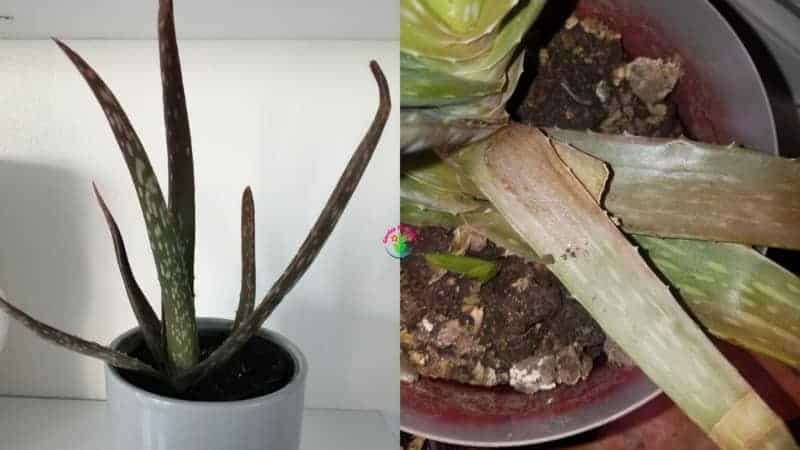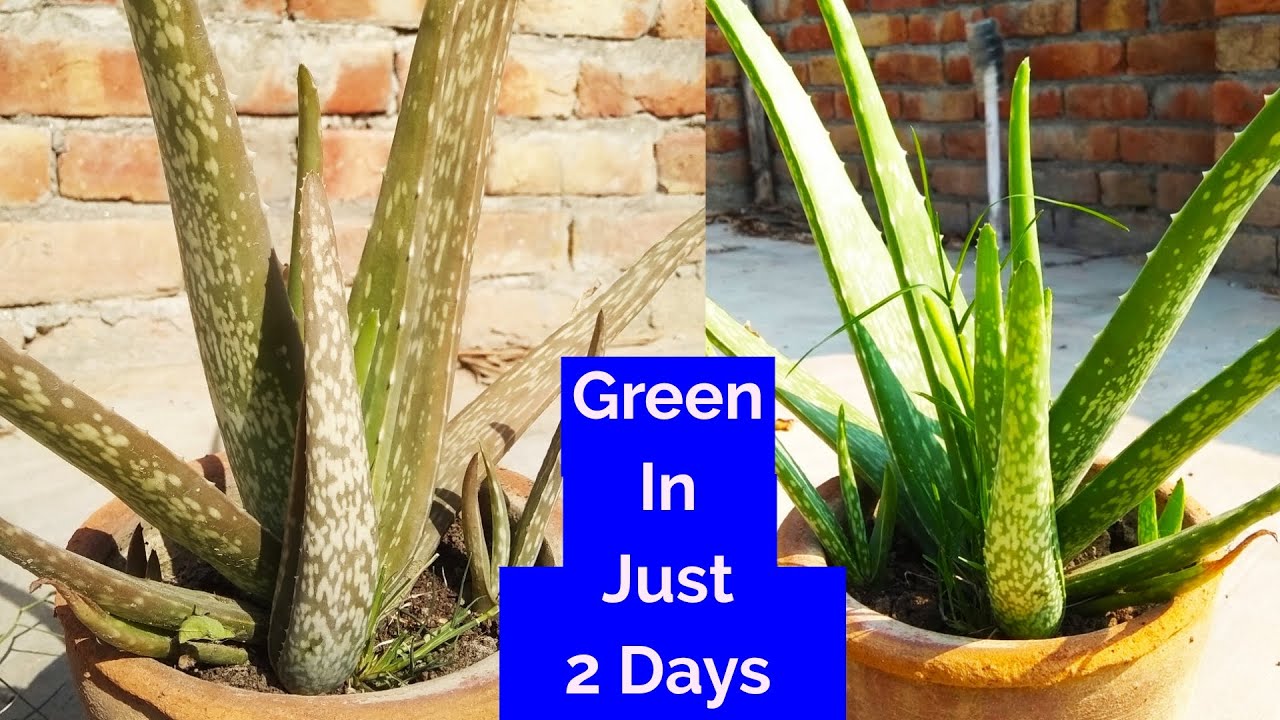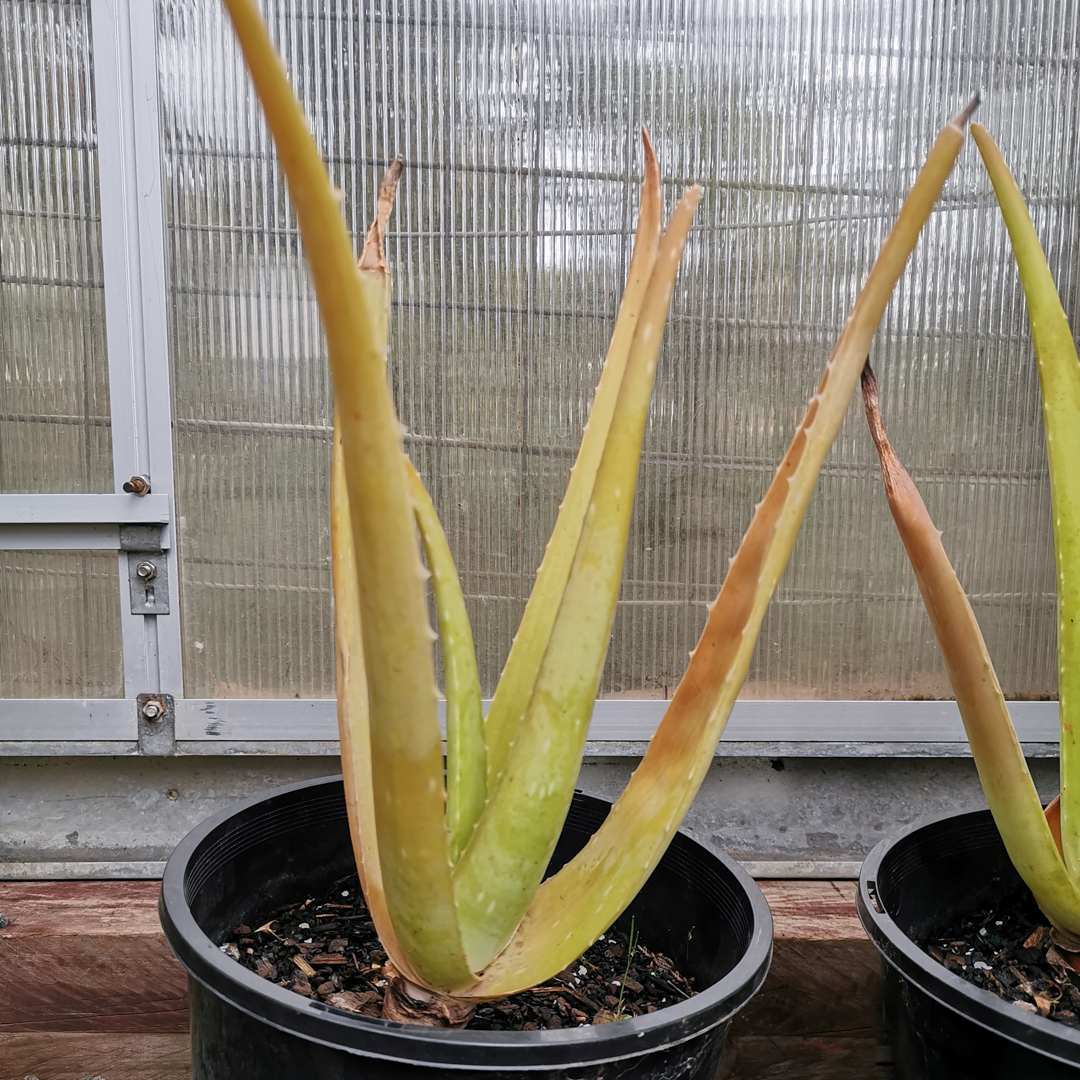Aloe vera leaves die at the bottom for a variety of reasons, including lack of sunlight, drought stress brought on by inadequate watering, or natural leaf regrowth as new leaves emerge.
Leaves of aloe vera In many cases, dying at the base of the plant is normal and nothing to worry about, but it can also be a sign that you need to change how you water your plants or if they are in too much shade, which can harm aloe vera.
Read on to find out the cause of your aloe vera leaves dying at the bottom and how to fix it.
Table of Contents
Bottom Aloe Vera Leaves Turning Brown and Dying
If your aloe vera has crispy, browning, decaying leaves at the base, this is not necessarily a sign of a specific issue but rather a normal stage of the plant’s life cycle.
Aloe vera produces new leaves as it expands, and while it does so, the older leaves at the base of the plant wither and fall off.
If only one or two of the bottom leaves are dying back, this is most frequently the case.
Although there is no imminent threat to the aloe, it is still possible to take the brown, crispy leaves off the plant for aesthetic reasons, but only if they come off easily.
Only try to remove a leaf if it is entirely dry, brown, and crispy. If there is strong resistance, do not attempt to pull the leaves off as this could harm the plant.
If almost all of the bottom leaves are withering back, this may be a cultural issue and call for some changes in how you take care of the aloe vera plant.
Lack of Sunlight Can cause Aloe Vera’s Bottom Leaves to die back
The aloe vera plant requires 4-6 hours a day of direct sunlight when being taken care of at home.
The leaves of the aloe become pale, spindly, and feeble if it receives too much shadow, and they frequently fall under their own weight as they seek out more light.
Aloe vera refocuses its energy on developing the inner leaves in the direction of the brightest source of light. As a result, the lowest leaves typically turn brown and wither away.
The bottom leaves of your aloe vera may appear to be dying if it receives less than 4 hours of direct sunlight daily.
Aloe vera that receives more sunlight maintains a more compact shape and experiences a slower rate of leaf drooping, browning, and bottom death.
Avoid moving the aloe all at once from a shaded place to direct sunlight as this could burn the leaves.
Instead, move the pot for a little bit longer each day for 4 weeks to expose your aloe vera to more sunlight. This provides your aloe vera with an opportunity to adjust to the increased light intensity without getting burned.
The bottom leaves of the aloe ought to stop fading as quickly if it receives more sunlight.
It can be difficult to revive individual leaves that are entirely drooping, and it may be essential to cut them down to the root so that new leaves can grow back or to take cuttings to propagate the plant.
If the leaves are turning yellow or feel squishy, or if there are other causes of fading leaves, read this article to learn how to revive a dying aloe vera plant.
Not Enough Water Causes Dying Leaves at the Base
Aloe vera can nevertheless experience underwatering even though it is a drought-resistant plant that thrives in stony, porous, well-draining soils with infrequent rainfall in its natural habitat.
Aloe vera actually needs a generous soak so that any surplus water can drain from the bottom of the pot, contrary to what is sometimes misunderstood when it is said that aloe vera doesn’t need much water.
Aloe vera, however, only needs watering when the soil is sufficiently dry to mimic the conditions of a heavy downpour of rain followed by a period of dryness in its natural habitat.
When plants are watered too lightly, the top inch or two of soil is simply moistened, and the water does not penetrate to the roots where it is needed.
Due to the drought stress caused by this, the lower leaves of the aloe vera plant curl inward and eventually die.
The answer is…
When the soil becomes dry, irrigate aloe vera. Usually, this happens once every 14 days or so, but depending on the environment and circumstances, this may change.
Give the soil a good soak, then watch how long it takes for the soil to dry out to determine the proper watering frequency for your aloe vera.
Feel the dirt at the bottom of the plant via the drainage hole at the base to determine whether it has dried up completely.
If the soil still feels moist, wait a few days before watering; however, if the soil feels dry, now is the ideal time to water.
In order to prevent issues with overwatering such root rot, this guarantees that the aloe vera has enough water to survive and that the soil dries out appropriately (read my article, how to tell if an aloe plant is overwatered or underwatered).
The aloe vera leaves should stop curling inward after two or three watering cycles with a generous amount of water each time, and the leaves at the base of the plant should stop deteriorating at the same rate.
Read my article on how to water aloe vera for additional details on all the recommended procedures for watering and how to water properly in the summer and the winter.
Key Takeaways:
- Aloe vera’s natural cycle includes dying leaves at the base of the plant, after which the plant produces new leaves. However, leaves that are decaying at the bottom may also be a sign of inadequate sunshine or hydration.
- Without enough sunlight, aloe vera tends to get leggy and its lower leaves fall off.
- Aloe vera leaves can also suffer from drought stress, which is brought on by watering them too lightly and preventing the water from getting to the roots where it is needed.
- To prevent your aloe vera plants’ bottom leaves from dying, place them in areas with 4-6 hours of direct sunlight and water them thoroughly.
FAQ
Why is my aloe vera plant rotting at base?
Root rot is frequently brought on by overwatering and a fungus infection. Aloe vera and other succulent plants are fatally affected by this disease. Root rot could lead to the death of your aloe. You might not detect the illness infection before it’s too late because the plant is in a pot!
How do you fix an overwatered aloe plant?
Replace the potting soil with a gritty, well-draining mix, remove any leaves that are going brown or yellow, and trim back any roots that are too long. Then, wait until the soil is totally dry before watering the aloe plant again.
Should I cut off Brown aloe vera leaves?
You can remove the browning tips of your aloe vera plant without causing any damage to the plant. It won’t hurt your plant to leave the brown tips on if dryness is the problem. If they have a fungal infection, you should get rid of them.
What does an overwatered aloe plant look like?
Overwatering of an aloe plant causes the leaves to become yellow or brown, become soft and mushy, and appear to be drooping. The roots decay and die back, appearing brown and emitting a foul odor. Native to the Arabian Peninsula, aloe plants thrive in poorly drained, rocky soils with infrequent rainfall.



